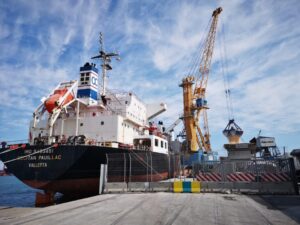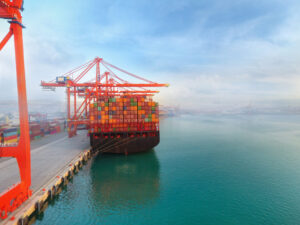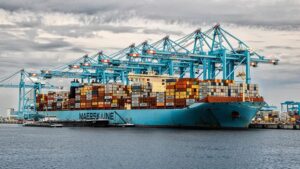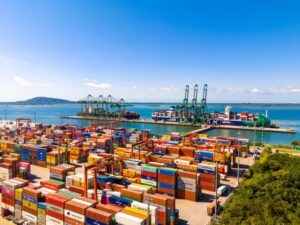PTI has recently spoken to Patrick Walters, Commercial Director of Peel Ports, in an exclusive interview in which he articulates the methods mega-ports can adopt to make remote cargo movements between mega gateways and hinterlands more cost-effective and efficient:
How can mega-ports lower costs of transporting cargo?
There are a couple of angles to lowering costs; one is something ports can do themselves. The message we’re trying to get is if you ship closer to your origin and destination of your cargo and shorten the landside process then these lower costs are undisputed. That’s where the large and obvious savings are and it’s almost undisputable that if you’re able to send your container by road over 70 miles as opposed to 250-300 miles, then clearly there is a cost saving there.
As far as the ports are concerned, ports can offer services such as depot services for storing empty containers which ideally would be off-dock. You don’t want empty containers on the container terminals themselves.
If mega-ports don’t lower their costs in the short-term, what are the long-term implications?
The whole thing about effective and efficient port operations is that the ports have to take an interest in how these containers move smoothly and cost-effectively to their end destinations. The issues are beyond the gate and in terms of my comments about the mega-ports, clearly the scales of the operation are things that Rotterdam, LA and Long Beach over certain periods of time were unable to cope with.
It’s also a problem for mega-ports which have multiple terminal operators at a single port, you have containers which are moving within the port itself, so you have congestion from intra-port movement and from movements to and from the hinterland. The long-term implications for these problems, as well as from the positive side from what we’re championing, is developing ports where you can realise the cost savings and avoid mega-ports. This can be done by choosing ports that are closer to the ultimate destination of the cargo. This can result in less congestion and lower levels of CO2.
What can shipping lines do to make cargo transportation more efficient?
What we’re asking shipping lines to do, and this doesn’t happen overnight, is to start re-designing their networks. This means choosing cargo routes and networks which better match the origin and destination of cargo. If they are already offering this service, then they are taking positive steps to meet the needs of the customer.








